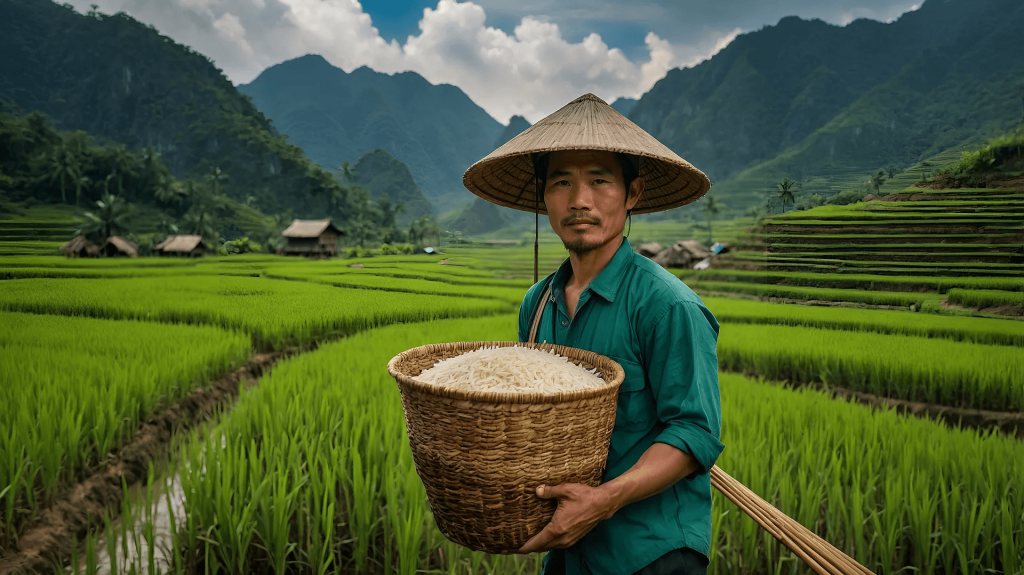Tags
Leading exporters of rice: Feeding the global market.
By LDN Guest Post

Rice is more than just a staple food—it’s a vital component of global food security, cultural identity, and economic trade. As one of the most widely consumed grains in the world, rice feeds more than half of the global population. Behind this massive consumption lies an intricate network of production and export, with certain countries playing a dominant role in supplying rice to international markets. Becoming a rice exporter is not only a commercial endeavor but also a critical responsibility in sustaining the global food chain.
The Global Importance of Rice
Rice is cultivated in over 100 countries and is central to diets in Asia, Africa, and parts of Latin America. With rising population levels and urbanization, the demand for rice continues to grow steadily. Countries that serve as an exporter of rice help meet this global demand and maintain the balance of food supply across nations.
Whether it’s Basmati rice from India and Pakistan, Jasmine rice from Thailand, or long-grain white rice from Vietnam, each variety contributes uniquely to global cuisines and trade flows.
Top Countries as Exporters of Rice
Several countries have emerged as global leaders in rice exports. Let’s take a closer look at the most prominent players in this space:
1. India
India is currently the largest exporter of rice in the world. Known for its aromatic Basmati rice and high-quality non-basmati varieties, India supplies rice to over 150 countries. Indian rice is favored for its flavor, texture, and cooking quality, making it a top choice in regions like the Middle East, Europe, and North America.
As an exporter of rice, India’s strength lies in its vast agricultural base, competitive pricing, and established supply chain infrastructure. In recent years, Indian exporters have also leveraged digital platforms and quality certifications to expand their reach.
2. Thailand
Thailand is another major exporter of rice, especially known for its premium Jasmine rice, which is highly prized for its fragrance and soft texture. Thai rice is primarily exported to countries in Asia, the US, and Africa.
Strong government initiatives, research in high-yield varieties, and a robust export network support Thailand’s rice industry. The country continues to maintain a reputation for quality, even in competitive markets.
3. Vietnam
Vietnam has become a significant exporter of rice over the last few decades. Its proximity to major rice-consuming countries in Asia, coupled with efficient production methods and trade policies, has enabled it to carve a strong position in the global rice market.
Vietnam exports mostly long-grain white rice and fragrant rice, which are in high demand in Africa, China, and the Philippines. As an exporter of rice, Vietnam has focused on increasing sustainability and improving milling and packaging technologies.
4. Pakistan
Pakistan is best known for its Basmati rice, grown in the fertile regions of Punjab. Like India, Pakistan has built a strong reputation for quality in the Basmati rice segment. Major export destinations include the Middle East, Europe, and the Americas.
Pakistani exporters have been increasingly focusing on modernization, certification, and compliance with international food safety standards to increase their global footprint.
5. United States
Though not traditionally associated with rice exports, the United States is a significant player in the global market. The U.S. primarily exports long-grain rice, medium-grain rice, and specialty varieties grown in states like Arkansas, California, and Louisiana.
As an exporter of rice, the U.S. focuses on high standards of production and packaging, appealing to markets that value quality and consistency, such as Canada, Mexico, and the Caribbean.

Challenges in the Rice Export Industry
Being an exporter of rice comes with challenges, including:
- Fluctuating Global Demand: Political instability, economic downturns, or climatic changes can suddenly impact demand.
- Logistics and Transportation: Maintaining quality during transport, especially for aromatic and long-grain rice, requires specialized packaging and handling.
- Regulatory Barriers: Exporters must navigate various international regulations and phytosanitary requirements.
- Climate Change: Unpredictable weather patterns can affect yield and quality, impacting exports.
Despite these challenges, technological advancements, improved irrigation, and research in high-yield varieties continue to support the growth of rice export markets.
The Future of Rice Exports
As global populations rise, the role of an exporter of rice will become even more critical. Demand for healthier and specialty rice varieties, such as organic, brown, or low-GI rice, is also on the rise. Countries that can adapt to changing preferences and sustainability standards will lead the next phase of growth.
Digitalization, traceability, and AI-driven farming are transforming how rice is cultivated and marketed. Exporters who embrace these innovations can improve efficiency, meet global quality standards, and access premium markets.
Conclusion
Rice is not just a commodity—it is a symbol of nourishment, tradition, and economic opportunity. For any country or business aiming to be a leading exporter of rice, maintaining quality, embracing innovation, and meeting the evolving needs of the global market are essential. As consumer tastes and global dynamics shift, the rice export industry will continue to evolve, feeding both people and progress across the world.
https://www.londondaily.news/leading-exporters-of-rice-feeding-the-global-market/Published Date: April 10, 2025






